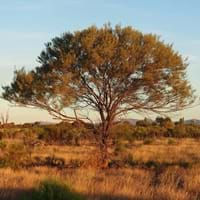Life Span
Perennial
Perennial
Origin
North America, Canada, Mexico
Australia
Types
Bigleaf hydrangea, Hortensia, Smooth hydrangea, Oakleaf hydrangea, Annabelle
Not Available
Number of Varieties
Not Available
Habitat
Forest edges, Hillside, Woods
Scrubs, tussock grasslands, Upland savannas
USDA Hardiness Zone
Not Available
10-11
Sunset Zone
1a, 1b, 2a, 2b, 3a, 3b, 4, 5, 6, 7, 8, 9, 10, 11, 14, 15, 16, 17, 18, 19, 20, 21, 22, 23
8, 9, 12, 13, 14, 15, 16, 17, 18, 19, 20, 21, 22, 23, 24
Habit
Upright/Erect
Upright/Erect
Flower Color
Blue, Dark Purple, Light Purple, Red, White
Lemon yellow
Flower Color Modifier
Bicolor
Bicolor
Fruit Color
Not Available
Gray Green
Leaf Color in Spring
Green, Light Green, Blue Green, Gray Green
Blue Green
Leaf Color in Summer
Light Green
Blue Green
Leaf Color in Fall
Red, Green, Orange, Blue Green, Gray Green, Bronze
Blue Green
Leaf Color in Winter
Tan, Sandy Brown
Blue Green
Leaf Shape
Oblovate
Long Narrow
Plant Season
Spring, Summer, Fall, Winter
Spring
Sunlight
Full Sun, Partial Sun
Full Sun
Type of Soil
Clay, Loam, Sand
Loam, Sand
The pH of Soil
Acidic, Neutral, Alkaline
Acidic, Neutral, Alkaline
Soil Drainage
Average
Well drained
Bloom Time
Early Summer, Summer, Late Summer
Spring, Late Winter
Tolerances
Pollution, Soil Compaction
Drought
Where to Plant?
Container, Ground
Ground
How to Plant?
Seedlings, Stem Planting
Seedlings
Plant Maintenance
Medium
Medium
Watering Requirements
Not Available
Do not water excessively
In Summer
Drought Tolerant, Average Water
Lots of watering
In Spring
Moderate
Moderate
In Winter
Average Water
Average Water
Soil pH
Not Available
Acidic, Neutral, Alkaline
Soil Type
Not Available
Loam, Sand
Soil Drainage Capacity
Not Available
Well drained
Sun Exposure
Not Available
Full Sun
Pruning
Remove damaged leaves, Remove dead branches, Remove dead leaves
Remove dead or diseased plant parts, Requires little pruning
Fertilizers
All-Purpose Liquid Fertilizer
All-Purpose Liquid Fertilizer, No fertilizers needed
Pests and Diseases
Red blotch
Insects, Root rot
Plant Tolerance
Pollution, Soil Compaction
Drought
Flower Petal Number
Single
Single
Foliage Texture
Fine
Fine
Foliage Sheen
Not Available
Matte
Invasive
Not Available
No
Self-Sowing
Not Available
Yes
Attracts
Bees, Flies
Butterflies
Allergy
Chest tightness, Diarrhea, Dizziness, Nausea, Vomiting
Asthma, Eye irritation, Headache, Nose Irritation, Throat itching, Vomiting
Aesthetic Uses
Not Available
Showy Purposes
Beauty Benefits
Not Available
Not Available
Edible Uses
Not Available
Yes
Environmental Uses
Air purification
Air purification, soil stabilisation
Medicinal Uses
Fever, Kidney problems, Urinary tract problems
Not Available
Part of Plant Used
Flowers, Root
Flowers, Sap, Seeds
Other Uses
Not Available
Used as a dye, Wood is used fore making tools
Used As Indoor Plant
Not Available
No
Used As Outdoor Plant
Yes
Yes
Garden Design
Not Available
Shade Trees, Street Trees
Botanical Name
PANICUM virgatum 'Northwind'
ACACIA aneura
Common Name
Northwind Switchgrass, Switchgrass
Mulga, True Mulga
In German
Hortensie
Mulga
In French
Hortensia
Mulga
In Spanish
Hortensia
Mulga
In Portuguese
Hortênsia
Mulga
In Polish
Hortensja
Mulga
Phylum
Not Available
Magnoliophyta
Class
Not Available
Magnoliopsida
Order
Not Available
Fabales
Family
Not Available
Fabaceae
Genus
Not Available
Acacia
Clade
Not Available
Angiosperms, Eudicots, Rosids
Tribe
Not Available
Not Available
Subfamily
Not Available
Not Available
Number of Species
Not Available
Not Available
Importance of Northwind Switchgrass and Mulga Tree
Want to have the most appropriate plant for your garden? You might want to know the importance of Northwind Switchgrass and Mulga Tree. Basically, these two plants vary in many aspects. Compare Northwind Switchgrass and Mulga Tree as they differ in many characteristics such as their life, care, benefits, facts, etc. Every gardener must at least have the slightest clue about the plants he wants to plant in his garden. Compare their benefits, which differ in many ways like facts and uses. The medicinal use of Northwind Switchgrass is Fever, Kidney problems and Urinary tract problems whereas of Mulga Tree is Not Available. Northwind Switchgrass has beauty benefits as follows: Not Available while Mulga Tree has beauty benefits as follows: Not Available.
Compare Facts of Northwind Switchgrass vs Mulga Tree
How to choose the best garden plant for your garden depending upon its facts? Here garden plant comparison will help you to solve this query. Compare the facts of Northwind Switchgrass vs Mulga Tree and know which one to choose. As garden plants have benefits and other uses, allergy is also a major drawback of plants for some people. Allergic reactions of Northwind Switchgrass are Chest tightness, Diarrhea, Dizziness, Nausea and Vomiting whereas of Mulga Tree have Asthma, Eye irritation, Headache, Nose Irritation, Throat itching and Vomiting respectively. Having a fruit bearing plant in your garden can be a plus point of your garden. Northwind Switchgrass has showy fruits and Mulga Tree has no showy fruits. Also Northwind Switchgrass is not flowering and Mulga Tree is not flowering . You can compare Northwind Switchgrass and Mulga Tree facts and facts of other plants too.




